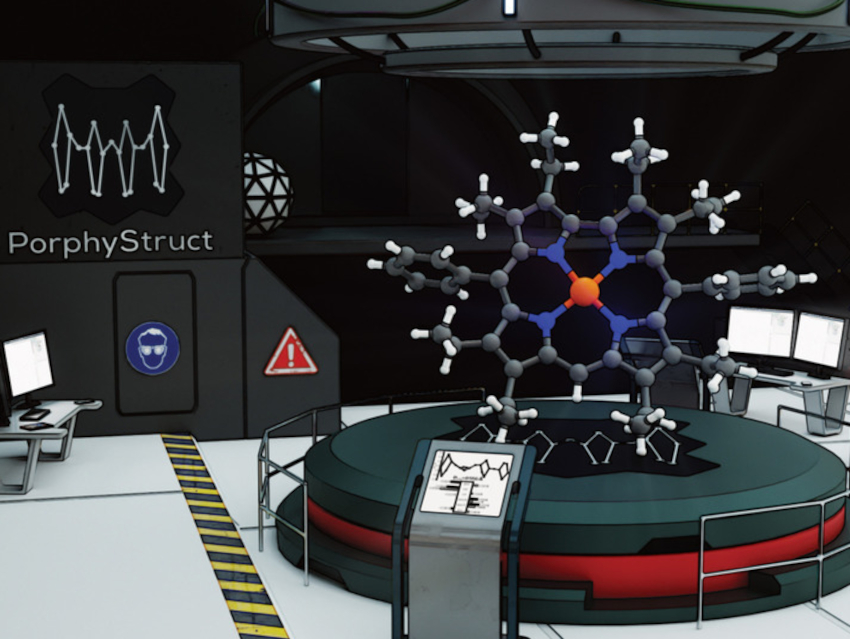Porphyrins and corroles are aromatic molecules. Nevertheless, their solid-state structures are highly influenced by non-planar distortions. As these distortions control important properties of tetrapyrrolic macrocycles, understanding them in detail is useful. They can, e.g., influence light absorption, excited-state lifetimes, or the stability of spin- and oxidation states of bound metal ions. However, existing solutions for the analysis of non-planar distortion modes have been limited to porphyrins.
Jens Krumsieck and Martin Bröring, TU Braunschweig, Germany, have developed PorphyStruct, a digital tool that extends the existing solutions to corroles and other tetrapyrroles. The program uses an approach that is similar to the normal-coordinate structural decomposition (NSD) method already established in this field. In this method, molecular structures are quantitatively described by a linear combination of the vibrational modes of a reference structure. Structures determined by X-ray diffraction as well as calculated structures can be analyzed. This provides the possibility to design compounds with desired properties.
Using a study of 17 porphyrin structures, the researchers showed that the new method performs on par with the existing ones for porphyrins. More importantly, it works with other porphyrinoids as well. This should allow more in-depth investigations of structure-property correlations in the future.
- PorphyStruct: A Digital Tool for the Quantitative Assignment of Non‐Planar Distortion Modes in Four‐Membered Porphyrinoids,
Jens Krumsieck, Martin Bröring,
Chem. Eur. J. 2021.
https://doi.org/10.1002/chem.202101243




